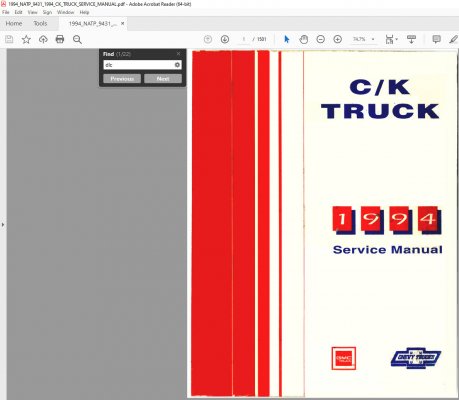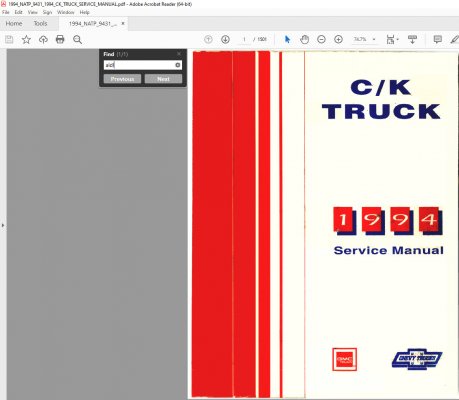Getting back to the original topic re: vapor lock.
Thanks to repeated poor choices by myself and my buddies, I got to practice more than most efforts to combat
vapor lock. I'd like to share a brief history of what the issues were when we were using carburetors, followed by TBI
& even further Vortec fuel delivery system design changes to keep this customer satisfaction issue at bay.
And I want to share this because some folks are choosing to retrofit a carb onto their DD, or even changing out
their original EFI for an aftermarket setup. And while it's their vehicle & their choice, they should be aware of all
the things that the GM engineers came up with during the design/prototyping of our GMT400s. And we should
pay attention to all this, for they did a good enough job that vapor lock comes up infrequenly in conversation,
whereas back in the day this was a hot topic. :0)
****
The 3 main variables concerning vapor lock:
1) The pressure (or partial vacuum) that the fuel is inside the fuel line. Just like the cooling system,
the higher the pressure, the higher the boiling point. Keep this in mind when we discuss where the
mechanical fuel pumps used to live vs. the electric fuel pumps in the tank.
2) How much radiated heat and just how close are the heat sources that are run adjacent to the fuel lines?
A '68 Nova equipped with a 90hp Super-Thrift 90hp 4 cylinder is an example of a motor where it's easy
to run the fuel line in such a way that it isn't near the hot exhaust. And since we only turn ~1/4 of the
fuel we burn into twist, and the rest is heat, the chances of vapor lock for customers who ordered their
cars this way was comparatively slim.
Especially when compared to the same Nova engine bay ordered with a 375hp L78 396ci big block. The
sheer amount of heat radiated into the same size engine bay was substantially more, whether it's
radiant heat from the manifolds & exhaust, or the additional BTUs pushed into the engine bay from
the radiator/fan combo.
3) The RVP (Reid Vapor Pressure) of the fuel being sold at what time of the year and what area of the
country. Here's a clear explanation of how the volatility of the fuel is adjusted in order to juggle the
ability to cold start gasoline engines vs the need to minimize evaporative emissions. (
RVP)
NOTE: As drivers we have no control over the RVP of the fuel we put into our vehicles. However, you
need to keep this in the back of your mind if you toy is full of gas mixed for cold weather and is driven
hard in a warmer than average weather pattern.
****
From worst to best, here's how the 3 variables were combined:
* The worst of all scenarios: Tank in the back, pump in the front, feeding a carb on the hot seat.
Back when we were stuffing the biggest engines that fit into whatever car we adopted, during the
summer we were busy fighting vapor lock in our rides. The problem could be avoided as long as
you could raise the hood after shutting down the engine. While this worked at your buddy's house,
it's not something you could do in front of a favorite juke joint or club in a rough neighborhood.
But we all knew how long it would take for the engine bay to cool off enough (with the hood down)
that the car would start back up, so this was part of the calculus of figuring out where to go and
how long we were going to stay.
And over time we learned all the tricks. We would pull the intake and replace the intake manifold gaskets
with the ones that blocked off the exhaust crossover passages. We would also move from the original
paper-thin carb base gaskets to the 1/4" insulated gaskets with the phenolic bushings in the corners. (
Q-Jet insulators)
This was normally enough to cure most of the vapor lock issues. But especially with custom bent
dual exaust, we'd end up trying to reroute and/or insulate the gas lines where they ran from the
tank up to the mechanical fuel pump on the engine like
@Richndaytona mentioned above.
Because the really tough vapor lock issues stemmed from the fact that the fuel in several feet worth of
line was at a partial vacuum because the pump in the front was putting a suction on the line in order
to draw the fuel forward from the tank in out back. (!)
* A lot better -- when the factory put an electric fuel pump in the tank
Elsewhere I've admitted to helping a buddy upgrade his mid-'70s Chevy Monza from a 120hp 262ci V8
to a LT-1 style 355ci that bolted right in place of the original motor. Heck, the original engine bay was
pretty toasty with the original underachiever engine, so I knew that tripling the hp meant a huge increase
in engine bay heat. And sure enough, whenever you opened the hood after a drive a wave of heat would
punch you right in the face. It was like opening a large oven in a commercial kitchen. :0)
So I was pleasantly surprised when we had zero issues with vapor lock on this car. The factory in-tank
electric fuel pump set to 5-6 psi kept that back to front fuel line at pressure, and this seemed to make
all the difference. Even though we had a custom bent dual exhaust under the car. (Basically a couple
of Z-28 resonators, for that's all we could fit with the exhaust exiting behind the tires.)
* TBI - Higher Pressure & new round-trip fuel delivery systems with EFI
So now it's several years later, and only the carb guys seemed to still be talking about vapor lock.
Not only are the TBI systems running at approx. double the pressure of the old carb setups, they
also moved away from a single fuel line (returnless) to a bypass regulator setup. That is, the fuel
pump sent forward more than enough fuel to support WOT. And the fuel rails would take whatever
they needed, while the excess was sent back to the tank.
In effect, the fuel tank is a giant heat sink for the fuel being fed to the injectors. And in the land of
the GMT400, this basic design worked well enough that only a 2-second prime was necessary to
ensure reliable starting, no matter how hot or cold it was in the engine bay.
But according to the FSM, they must have run into vapor lock issues in the >8500 GVW vehicles
during prototype testing down at GM's AZ desert proving grounds. The solution was to have the
fuel pump prime for ~20 seconds after turning the key to ON. I'll bet that this amount of time
was derived empirically during worst-case hot weather testing. And I'll bet that 20 seconds is how long
it takes to cycle enough cool fuel from the tank through the TBI fuel delivery loop in order to get the
gas below the vapor/fuel transition temp point. (As
@L31MaxExpress has observed, deadheaded
fuel delivery systems are more prone to vapor lock than the round-trip setup on our TBI machines.
* Vortec - Higher pressure then TBI -- and also pressure is now held between trips.
Fuel pressure is now held much higher than the 4-6 PSI for needle-and-seat carbs or the
low teens for all the SBC (and some of the BBC) TBIs. Furthermore, in addition to the
2-second prime with the initial Key ON, the Vortec systems have an additional 2-second
fuel pump operation at Key OFF. (!) My unproven theory is that the designers were
trying to ensure that a hot fuel module wouldn't be necessary on the 8-lugger GMT400s.
****
The above is just a thumbnail sketch about how fuel delivery systems have improved over
the years from the vapor lock perspective. With this knowledge, using a fuel pressure gauge
we can better troubleshoot a 'hot engine/hot day' engine starting issue.
It's not always an overheated ICM. (But it doesn't hurt to make sure that your ICM has an
optimum quantity of heat sink compound between it and where it's mounted.)
The more the heat x the smaller the engine bay = the more that vapor lock can rear it's ugly head.
If anyone still reading this has their heart set of converting their GMT400 van over to a carb setup
and you live in Phoenix, be sure to think your fuel delivery system through -- at least as much
as the original GM engineers did.
Me? Those old memories of battling vapor lock are still rattling around in my noggin. So every
time my '99 big block chore truck starts immediately, hot or cold, I appreciate it every single time.
Promise. :0)





